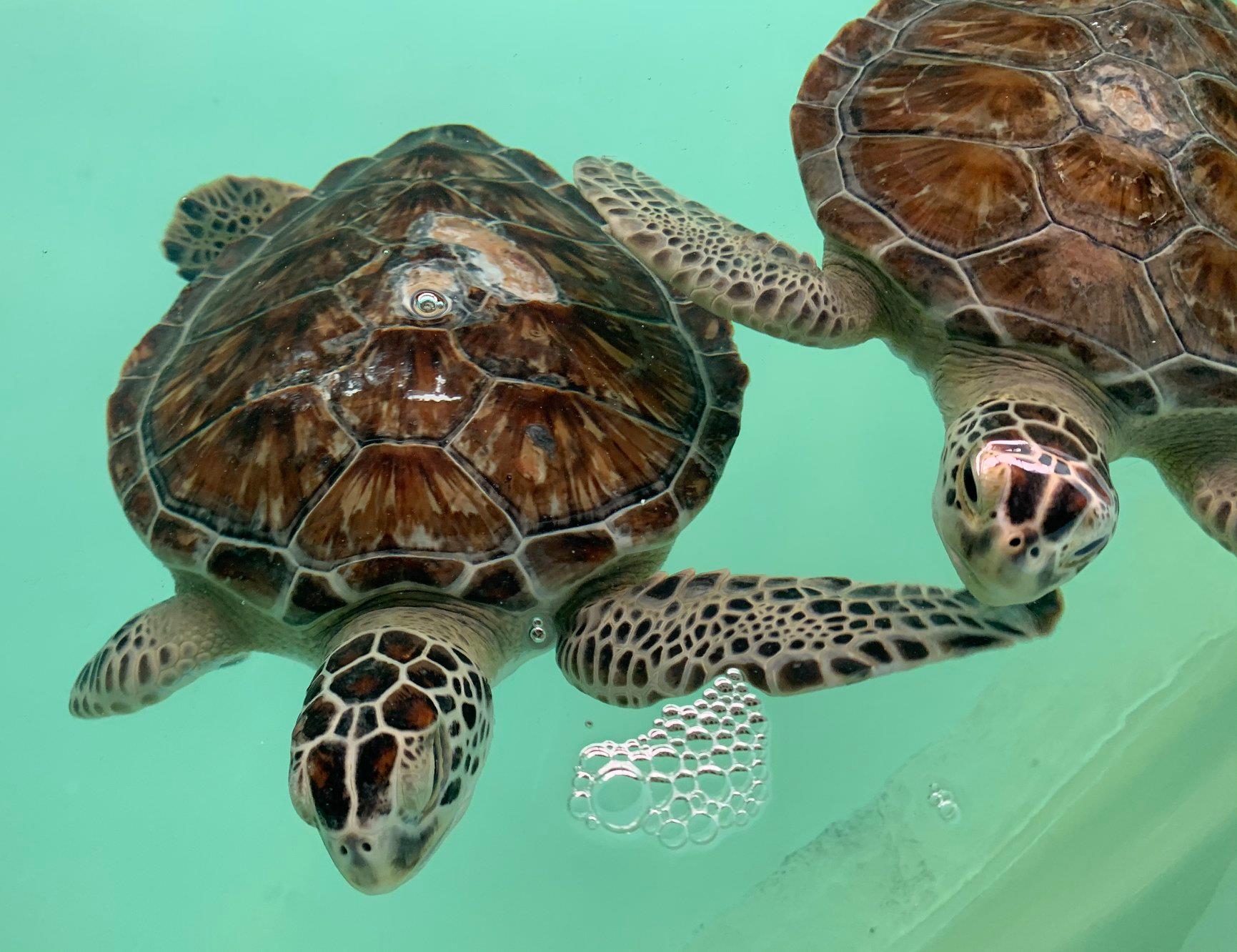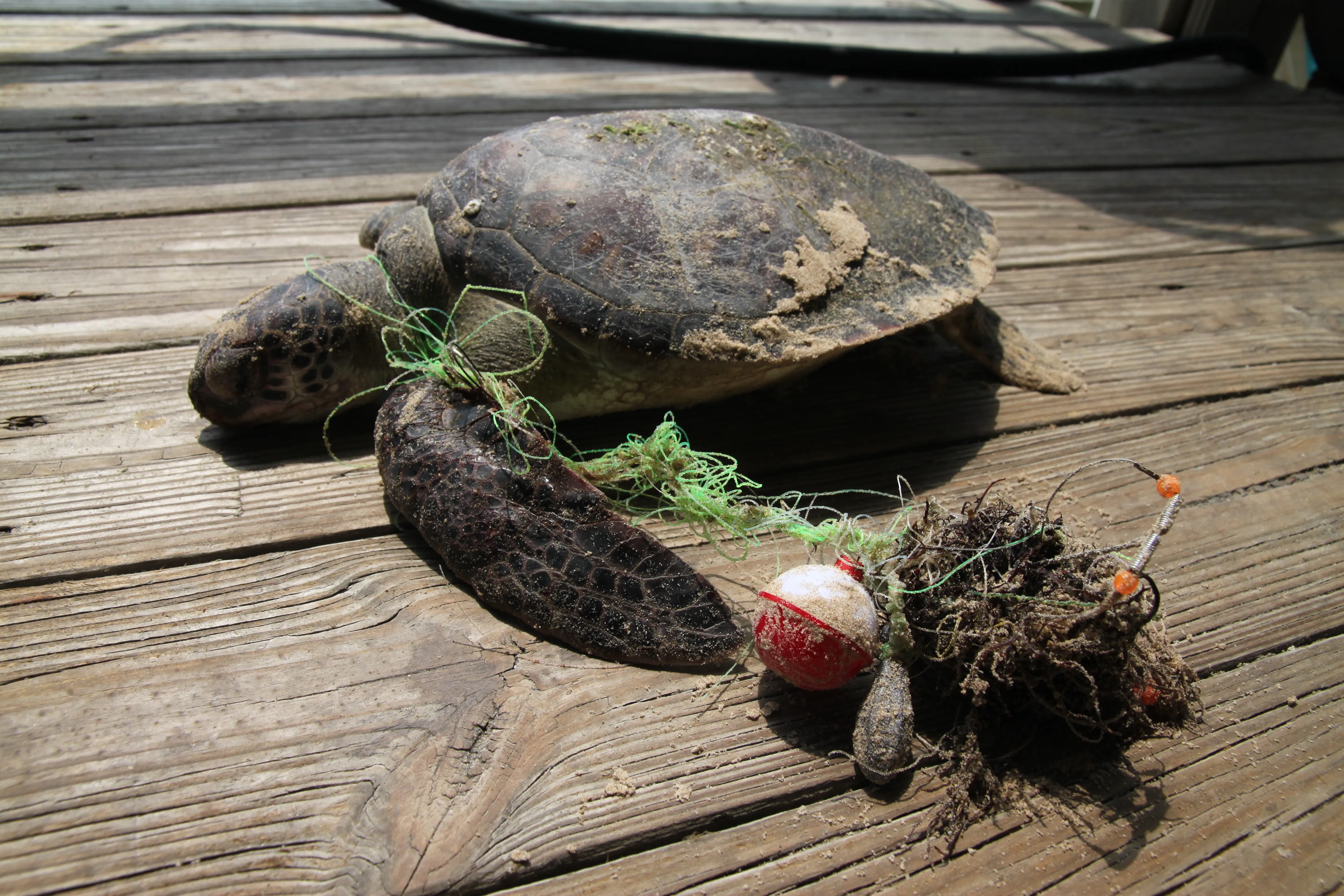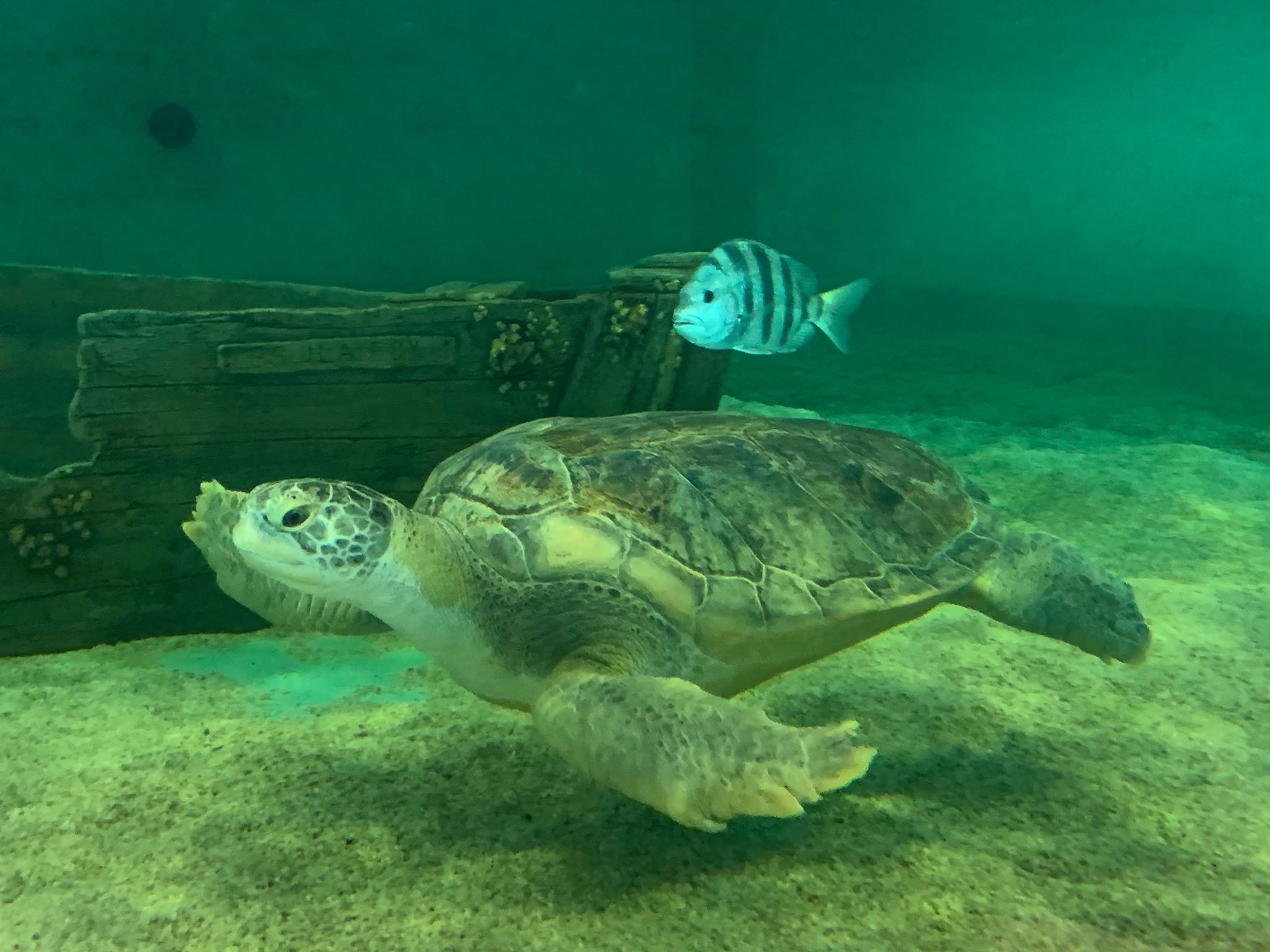Discover More about sea turtles
Sea turtles play a vital role in preserving the health of the world’s oceans. They maintain marine habitats, assist with nutrient cycling, provide habitat for other marine organisms, and help sustain balanced food webs.
Extensive changes have occurred throughout ocean ecosystems due to declining sea turtle populations. Human-caused threats are pushing sea turtles towards extinction. As their numbers continue to decline, so does their ability to fulfill their vital roles in the ecosystem.
Our goal is to educate the public about threats to sea turtles and their habitats as a step toward protecting them and ensuring healthy and resilient oceans for future generations.
Dive in Deeper with our special programs and activities
Learn the Basics before You visit

Species
Seven species of sea turtles inhabit the world’s oceans: Kemp’s ridley (Lepidochelys kempii), olive ridley (Lepidochelys olivacea), hawksbill (Eretmochelys imbricata), loggerhead (Caretta caretta), green (Chelonia mydas), leatherback (Dermochelys coriacea), and flatback (Natator depressus). Each species inhabits U.S. waters with the exception of the flatback sea turtle.
All species are protected under the Endangered Species Act (ESA). To this day, no species has recovered enough to be completely removed from the ESA and some populations continue to decline.
Common Threats
Sea turtles face many threats in their environment. By learning about and addressing these threats, humans can help sea turtle populations recover and help restore their habitat.
- Marine Debris: Plastic bags, balloons, and other forms of trash can be mistaken for food and cause starvation, intestinal damage, or even death.
- Entanglement: Improperly discarded or lost fishing gear is particularly dangerous and a common source of entanglement.
- Boat Strikes: Boat and ship traffic can impact individuals by striking them while they surface to breathe, causing significant or lethal damage.
- Climate Change: Warming temperatures affect sea turtle habitats, food sources, and sex ratios in incubating nests. Rising seas can alter coastlines and destroy nesting beaches.
- By-catch: Incidental capture in fishing gear is a huge threat to many species worldwide. Fisheries catch sea turtles and other species accidentally. When discovered, they are usually discarded as trash, already dead.
- Poaching: Sea turtles are harvested to make jewelry, guitar picks, boots, and other products.


How You Can Help Sea Turtles
Together, we can reduce our impact on the environment and restore ocean ecosystems. No matter where you live, your impact makes a difference. Consider the tips below to live a more sustainable lifestyle.
- Reduce your single-use plastics to prevent entanglement and ingestion.
- Avoid releasing balloons. Sea turtles can mistake them for food.
- Participate in cleanups in your community. Remember, all rivers lead to the ocean.
- Use “reef-safe” sunscreen to reduce damage to coral reefs, a critical habitat for sea turtles.
- Make responsible seafood choices. This is one of the most important ways to contribute to healthier oceans.
- Recover all fishing gear to prevent entanglements.
SUPPORT SEA TURTLE, INC.
All proceeds of sales directly fund sea turtle care and facility operations
Sea Turtle, Inc. is dependent on donations to fund our mission; we do not receive any government support.
Patients depend on us for their lives. Be a part of the journey through patient adoption.
Memberships helps fund our mission to rescue, rehabilitate, and release injured sea turtles, educate the public, and assist with conservation efforts for all marine turtle species.
